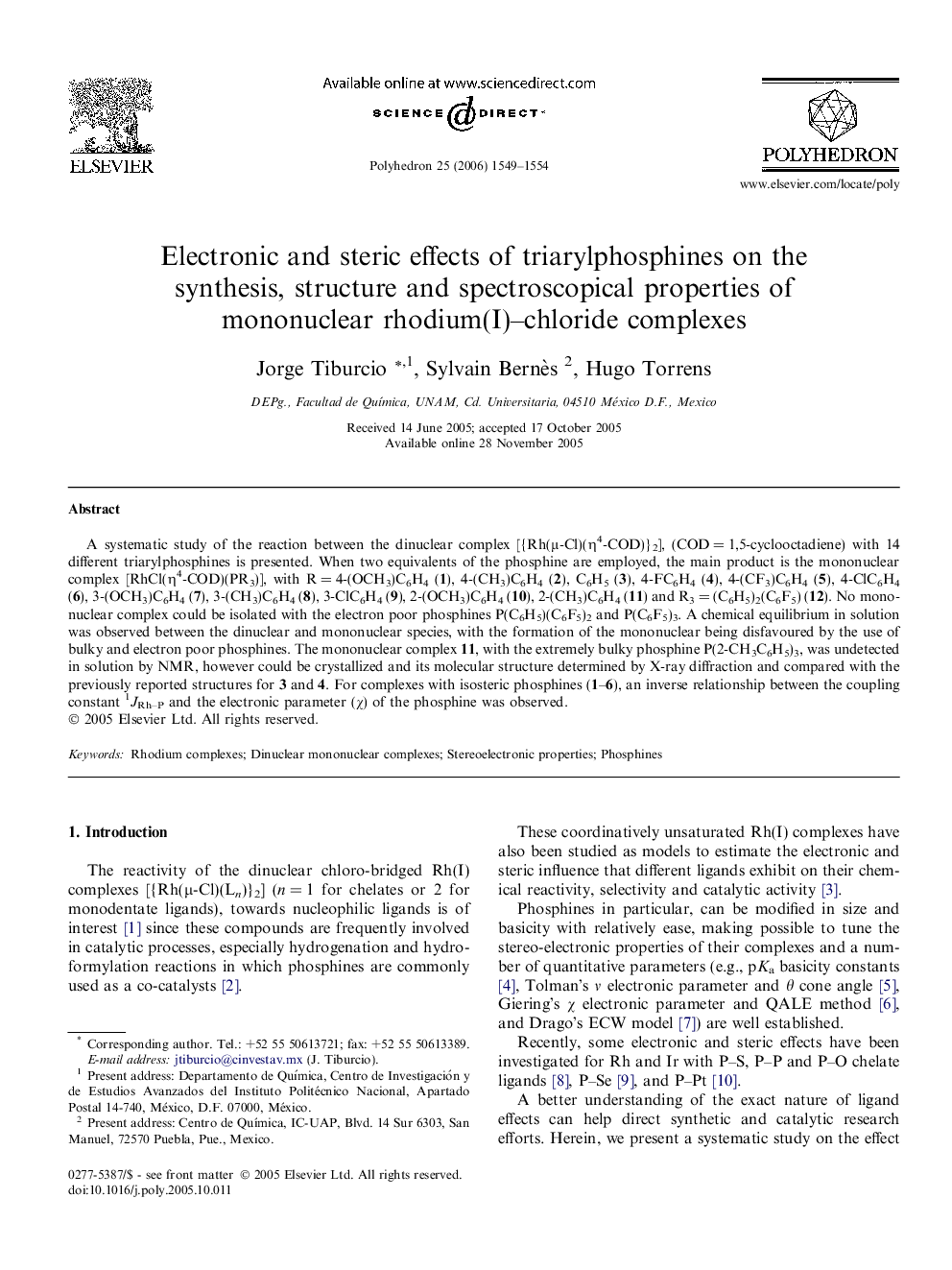| Article ID | Journal | Published Year | Pages | File Type |
|---|---|---|---|---|
| 1340517 | Polyhedron | 2006 | 6 Pages |
A systematic study of the reaction between the dinuclear complex [{Rh(μ-Cl)(η4-COD)}2], (COD = 1,5-cyclooctadiene) with 14 different triarylphosphines is presented. When two equivalents of the phosphine are employed, the main product is the mononuclear complex [RhCl(η4-COD)(PR3)], with R = 4-(OCH3)C6H4 (1), 4-(CH3)C6H4 (2), C6H5 (3), 4-FC6H4 (4), 4-(CF3)C6H4 (5), 4-ClC6H4 (6), 3-(OCH3)C6H4 (7), 3-(CH3)C6H4 (8), 3-ClC6H4 (9), 2-(OCH3)C6H4 (10), 2-(CH3)C6H4 (11) and R3 = (C6H5)2(C6F5) (12). No mononuclear complex could be isolated with the electron poor phosphines P(C6H5)(C6F5)2 and P(C6F5)3. A chemical equilibrium in solution was observed between the dinuclear and mononuclear species, with the formation of the mononuclear being disfavoured by the use of bulky and electron poor phosphines. The mononuclear complex 11, with the extremely bulky phosphine P(2-CH3C6H5)3, was undetected in solution by NMR, however could be crystallized and its molecular structure determined by X-ray diffraction and compared with the previously reported structures for 3 and 4. For complexes with isosteric phosphines (1–6), an inverse relationship between the coupling constant 1JRh–P and the electronic parameter (χ) of the phosphine was observed.
Graphical abstractA systematic study of the reaction between the dinuclear complex [{Rh(μ-Cl)(η4-COD)}2], with 14 different triarylphosphines is presented. A chemical equilibrium in solution was observed between the dinuclear and mononuclear species, with the formation of the latter being disfavoured by the use of bulky and electron poor phosphines. The complex with the extremely bulky phosphine R = 2-CH3C6H5, was undetected in solution by NMR, however could be crystallized and its molecular structure determined by X-ray diffraction.Figure optionsDownload full-size imageDownload as PowerPoint slide
